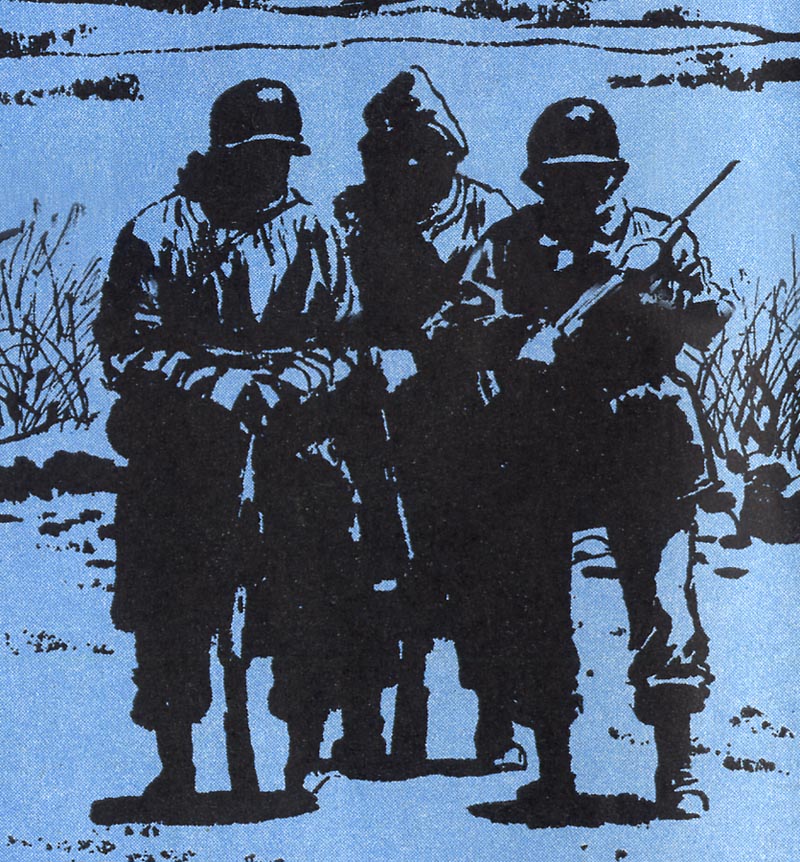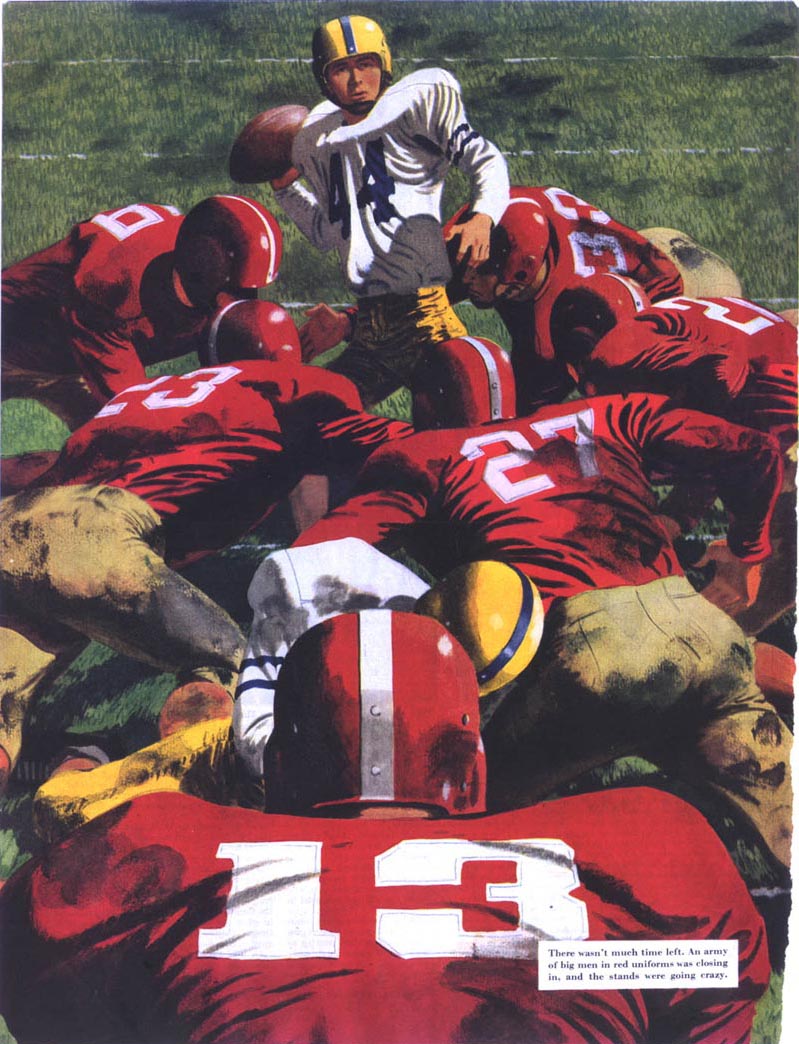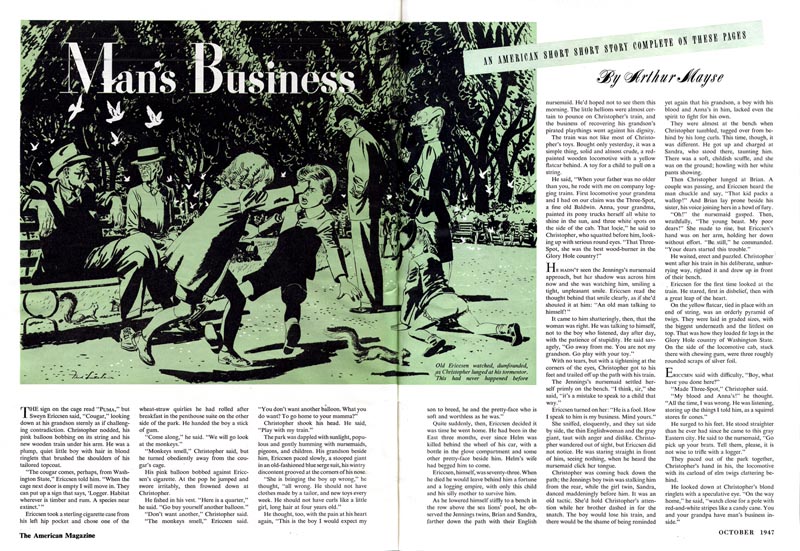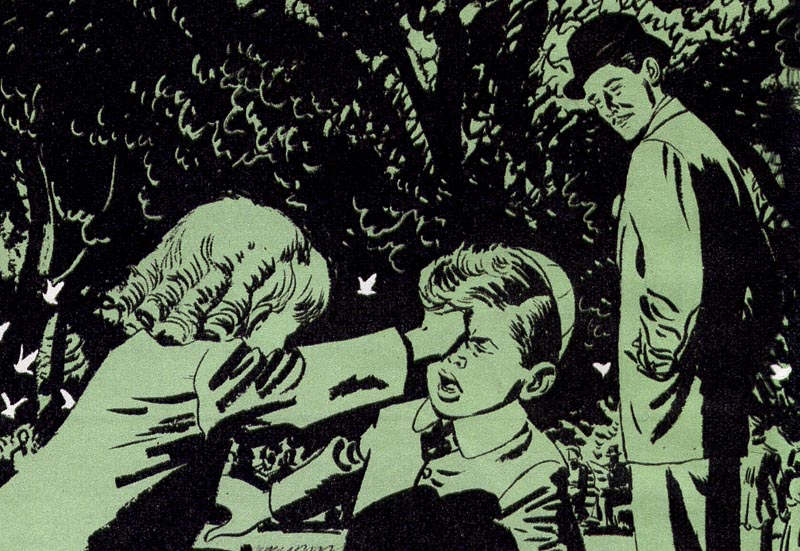Q: What is the most important element in a good advertising illustration?
A: I believe that the basic picture requirement is clarity, and simultaneously, the right content. Clarity and content are synonymous. It little matters how beautiful, compelling and interesting the surface of a picture might be if it does not say the right thing and say it clearly.

The volume of advertising is tremendous. The differences in most products minute. Attention is a major problem. Any time you can "write copy" in a picture using three quarters of the space - or in television clearly demonstrate or explain the idea visually - you are way ahead. You get attention and you get it centered right on the idea.

This takes illustration beyond its role of illustrating words. It becomes a language in itself. It can however only be "successful" if the picture maker is sympathetic, knowledgeable, and objective in his thinking in order to fulfill the requirements of the problem. He is interested primarily in communicating to his audience clearly and convincingly - the promise and benefit of the idea. The means by which he does it should always be planned to do only this, not to dilute the idea.

Q: What, in your opinion, is the value of the picture to the total creative effort in advertising?
A: Offhand I would say it is the instant communication of the idea. In advertising, the picture should be good copy. I believe it should do more than illustrate. It should appeal to the mind and have something to say of substance and meaning.

Often text is written describing the picture, usually saying what the picture has already said. In advertising, I think the picture has a job to do and the text should only say what the picture cannot - the reason, the benefit, the price, and so on.

Q: What contribution does a good illustration make to an advertisement?
A: Content! Content is what you are drawing. That is more important than how you draw. I observe that at this time we are on a "technique jag," which gets in the way of clear communication.

Q: How much of the fundamental copy job rests on the picture?
A: As much as possible. I believe the right picture can be very clear and convincing in setting up sales proposition and interesting people. For the average product little text is necessary. People in advertising are basically copy minded and their idea of a picture is something to illustrate their words. A good picture man with advertising sense can make an outstanding contribution to advertising.

Continued tomorrow.
* My Fred Ludekens Flickr set
Very interesting post, Leif. Thanks.
ReplyDeleteI've been giving thought lately to the subject of narrative ambiguity in art content, and clarity is certainly the other side of the coin. For story illustration or advertising it's critical, but less so for "fine art" where allowing multiple levels of interpretation in a single work is often a primary concern.
Hi Fred Ludeken fans
ReplyDeleteI am the lucky owner of a FL illustration of a paddleboat bruning—Prairie Queen. I'm hoping some of you may have seen the publication this ran in.
You can see it atthis link, and I appreciate any help you can provide.
http://www.phcreative.com/PrairieQueen.jpg
Interesting comment dclemons. If the fine artist's objective or goal is clarity, those that are successful at accomplishing that, would be narrowed to very few. It has always annoyed me that fine artists seem to be able to get away with bad drawing, bad design, bad communications, bad ideas, and bad art, in the name of innovation, creativity, expression, etc. I am aware that there are some excellent painters in the field today, however... and there seems to be a market for quality fine art that the public can easily relate to.
ReplyDeleteI don't think art school's and many art instructors have ever been very good at teaching effective communications through art. When I was studying illustration in the late 50's and early 60's, composition, design, technique, degree of looseness and finding your personal style, was the emphasis, not communications and content, so much. Much of what they were teaching had little value when I started working at my first job in a full service art studio, and had to deal with the real world of illustration. Later, when I was teaching part time, I tried to teach my students real world illustration. About half of them were disappointed and some even resentful, because they felt learning to do illustration assignments that communicated an idea clearly, became restrictive and not much "fun".
Tom Watson
db; I think you're right about that - although I think good editorial art can include multiple levels of interpretation and a certain amount of ambiguity as well and perhaps that's why so many illustrators who wanna be fine artists (but not the starving type) seem to migrate to editorial.
ReplyDeleteYou know what I found really interesting about Fred Ludekens' emphasis on clarity and content is how much it reminds of John Buscema's "chalk talk" from The Comics Journal #226, Aug 2000. Buscema told young artists "Your problem is to tell a story the best possible way, the fastest possible way."
That's a philosophy he learned as a comp and storyboard artist at Cooper studio rival, Fredman-Chaite. Buscema was what Ludekens called "a good picture man with advertising sense".
Another interesting parallel between Ludekens the ad artist and the storytelling mission of good comics art: Ludekens says "I think the picture has a job to do and the text should only say what the picture cannot"
That sentiment echoes everything I've ever learned about sequential art storytelling.
Ludekens: "I observe that at this time we are on a "technique jag," which gets in the way of clear communication."
Bro-ther! Does that ever sound like what's happened again and again in comics in the last couple of decades!
Anyway -- just my observation that there are (at least according to fred Ludekens) some interesting similarities between these two forms of illustration.
From my own art school experiences I can recall students for whom content was important who struggled to find ways to be as vague as possible with the imagery in their work. The reasoning was that this piece would hopefully hang on someones wall for years, and if too much was told right off the bat then it would be less appealing in the long term, if that makes sense.
ReplyDeleteI'm not sure how effective that strategy was since I'd be just as happy with a clear straight forward Ludekens on my wall as anything less so. It's a form of communicaton, so I think the viewer brings their side of the story with them to an extent.
One could certainly go back to the 19th century and further to find content driven art that was presented in an obvious manner. It may be a vanishing discipline, however, at least where "fine art" is concerned.
This blog is great! I'm really happy to have stumbled onto it. I appreciate your dedication to it.
ReplyDeleteThanks for sharing.
db; I'll be curious to hear what you think after reading today's (Wed.'s) installment where Ludekens addresses questions about the influence of fine art on illustration.
ReplyDeleteJared; Many thanks for your kind words. :^)
ReplyDeleteWho's the picture with the soldiers from? I like it a lot!
ReplyDeletesaskia; its from the Saturday Evening Post. If you follow the link to my Fred Ludekens flickr set at the end of each day's post you'll get all the publication info for each image I present.
ReplyDelete